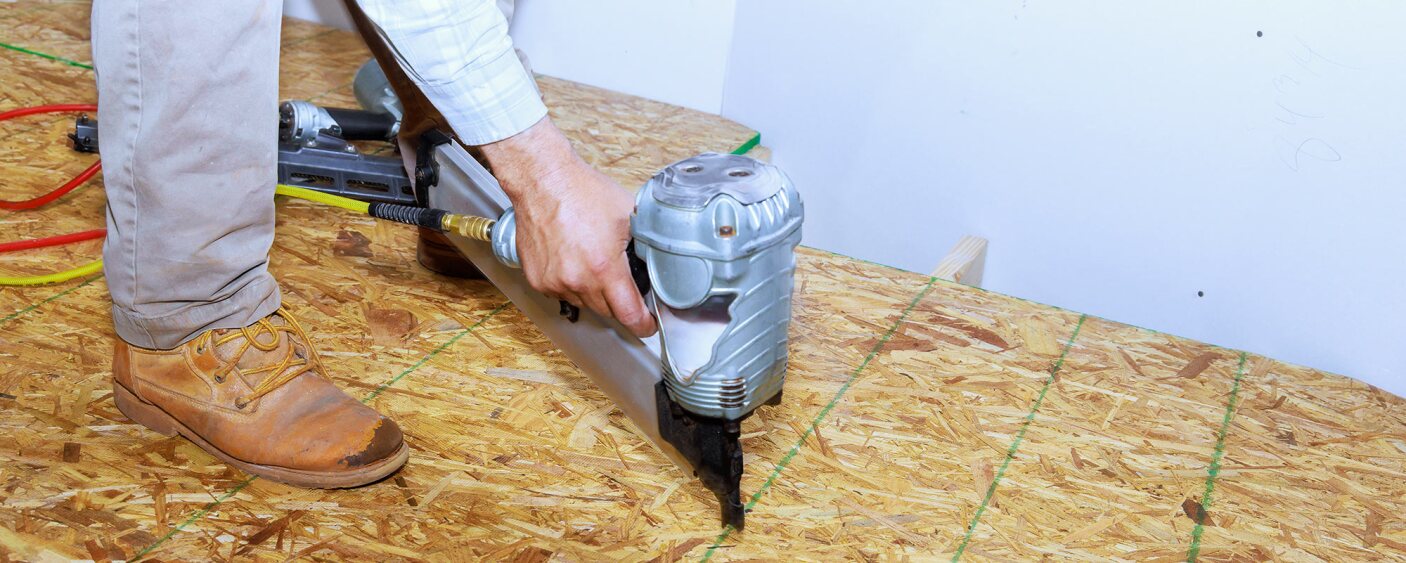Pneumatic tools are powered by compressed air and include chippers, drills, hammers, and sanders.
There are several dangers associated with the use of pneumatic tools. First and foremost is the danger of getting hit by one of the tool’s attachments or by some kind of fastener the worker is using with the tool.
Protective gear
Eye protection is required, and head and face protection is recommended for employees working with pneumatic tools. When excessive noise is present, hearing protection is also recommended.
Screens must also be set up to protect nearby workers from being struck by flying fragments around chippers, riveting guns, staplers, or air drills.
Compressed air guns should never be pointed toward anyone. Workers should never “dead-end” them against themselves or anyone else.
Tool precautions
In general, the same precautions should be taken with an air hose that are recommended for electric cords, because the hose is subject to the same kind of damage or accidental striking, and because it also presents tripping hazards.
When using pneumatic tools, a safety clip or retainer must be installed to prevent attachments such as chisels on a chipping hammer from being ejected during tool operation.
Pneumatic tools must be checked to see that the tools are fastened securely to the air hose to prevent them from becoming
disconnected. A short wire or positive locking device attaching the air hose to the tool must also be used and will serve as an added safeguard.
If an air hose is more than ½ inch (12.7 millimeters) in diameter, a safety excess flow valve must be installed at the source of the air supply to reduce pressure in case of hose failure.
Pneumatic tools that shoot nails, rivets, staples, or similar fasten ers and operate at pressures more than 100 pounds per square inch must be equipped with a special device to keep fasteners from being ejected, unless the muzzle is pressed against the work surface.
Source: U.S. Department of Labor, OSHA 3080 Hand and Power Tools
The information and recommendations contained in this material have been obtained from sources believed to be reliable. However, SECURA accepts no legal responsibility for the accuracy, sufficiency, or completeness of such information. Additional safety and health procedures may be required under particular circumstances. Please talk with your SECURA Risk Management Consultant for more information.






